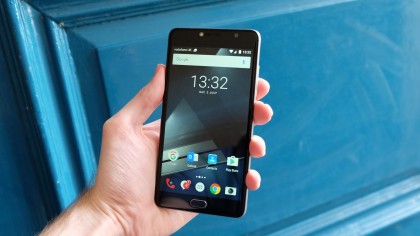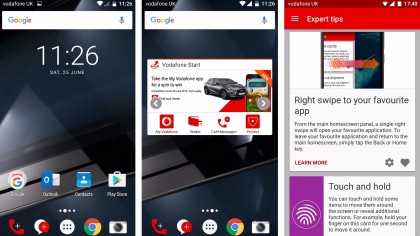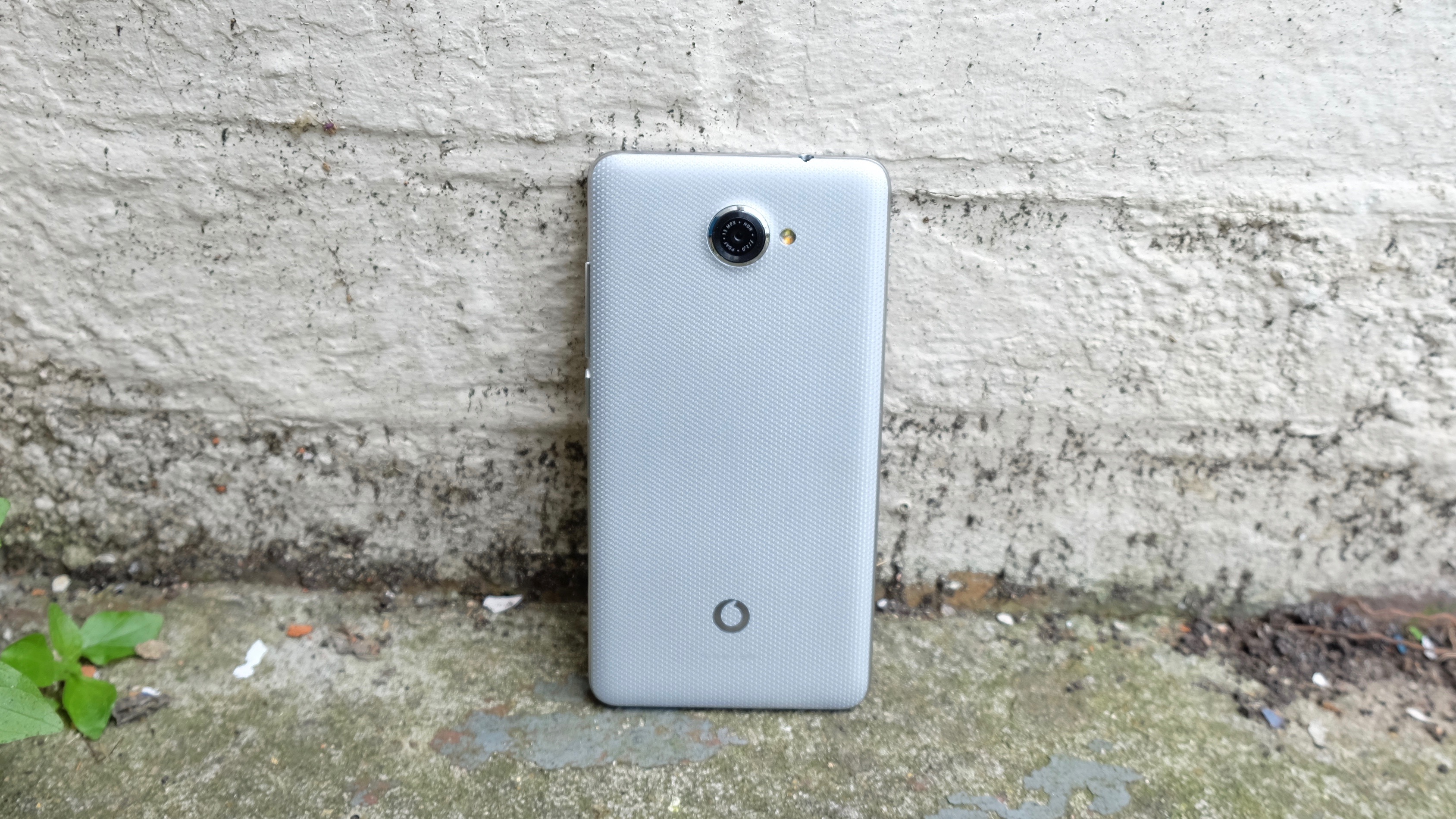Why you can trust TechRadar
Just as the Vodafone Smart Ultra 6 distinguished itself with a fine screen at a low price, so does the Vodafone Smart Ultra 7.
Once again, we're looking at a large (albeit pretty standard for Android) 5.5-inch display with a Full HD 1080p resolution (that's 1080 x 1920). Those are the same basic vital statistics as the Moto G4, as well as the OnePlus 3 - and the latter is a £329 phone.
Of course, the OnePlus 3 display is a bold AMOLED example, whereas the Smart Ultra 7 relies on IPS LCD panel technology. As a result, it's not the most vibrant or contrasty display we've ever seen. Indeed, it's not even a matter of the technology used - it's notably more washed out when held up against more premium IPS LCD displays like the iPhone 6S.

Maximum brightness isn't all that bright, and viewing angles, too, aren't quite at the same level as the best IPS LCD displays. That's typically one of this display technology's strengths, and the fact that the Smart Ultra 7 isn't quite up to speed (although far from bad) is possibly because the screen isn't positioned right near the surface glass like in higher end phones.
But we have to return, once again, to that price. For just £135 you're getting a crisp display where you'll struggle to pick out the individual pixels in general usage.
Another key selling point for the Smart Ultra 7 is its near-stock Android OS. I've always appreciated the fact that Vodafone doesn't attempt to create or commission a heavy custom skin for its phones. It's a clever move, as by simply not meddling, Vodafone's phones often feel sharper, fresher, and more responsive than many phones at twice the price.

It also means that you're getting Android 6.0 Marshmallow out of the box. That's the latest version of Google's OS, whilst you'll find that some phones (particularly from China) are still launching with Android 5.1 Lollipop.
Sign up for breaking news, reviews, opinion, top tech deals, and more.
This means that straight away you get additional built-in features like Doze and Google Now on Tap. Or rather, you should. I found that Google Now on Tap, which typically gives you contextual information on whatever you're doing with a press and hold of the home button, wasn't active out of the box.
What's more, while there's an option to activate it in the settings menu, it didn't seem to work. Rather, it simply jumped to the plain old Google Now screen when I held down the home button.
Still, Google Now on Tap isn't quite where it needs to be as a service right now, so it's not a massive loss.

More irritating by far is the presence of Vodafone's own ugly apps. Many of these are optional at setup, so you don't have to install the likes of Vodafone's Wallet or Protect apps.
But you still have to put up with Vodafone's own Call+ and Message+ apps, as well as an Accessories app for flogging you more stuff, a Vodafone Start widget, and a Vodafone Expert Tips screen to the left of the primary home screen.
Of course, this being Android you can replace those default messaging and dialler apps, and removing the widget is as simple as pressing, holding, and dragging to the Remove option. You can also deactivate the annoying tips notifications you'll receive from Vodafone in the aforementioned Expert Tips screen, so it's useful for one thing at least.
Overall, though, this is just about the stock-est Android UI this side of a Nexus or Moto phone.
Another key feature Vodafone is pushing with the Vodafone Smart Ultra 7 is perhaps predictable coming from a mobile network - 4G connectivity.

In truth, though, this is less of a boast than it used to be. It's quite normal for entry-level smartphones to be able to connect to super-fast mobile networks these days. For example, the Moto E (2015) launched back at the beginning of 2015 with just such LTE support - and that only cost £100 at launch.
Then again, 4G was arguably somewhat superfluous on such early cheap-and-cheerful 4G phones. What's the point of being able to stream rock-solid Full HD video on the move when all you've got is a 4.5-inch 540 x 960 display?
As such, the Vodafone Smart Ultra 7 succeeds by combining 4G connectivity with that large and sharp 5.5-inch 1080p display. It's a great entry point for serial YouTube or Netflix addicts.

Jon is a freelance journalist who has been covering tech since the dawn of the smartphone era. Besides TechRadar, his words and pictures have appeared in The Telegraph, ShortList, Tech Advisor, Trusted Reviews, Expert Reviews, and more. He largely covers consumer technology, with a particular focus on smartphones and tablets. However, he's also been known to dabble in the worlds of entertainment and video games.
